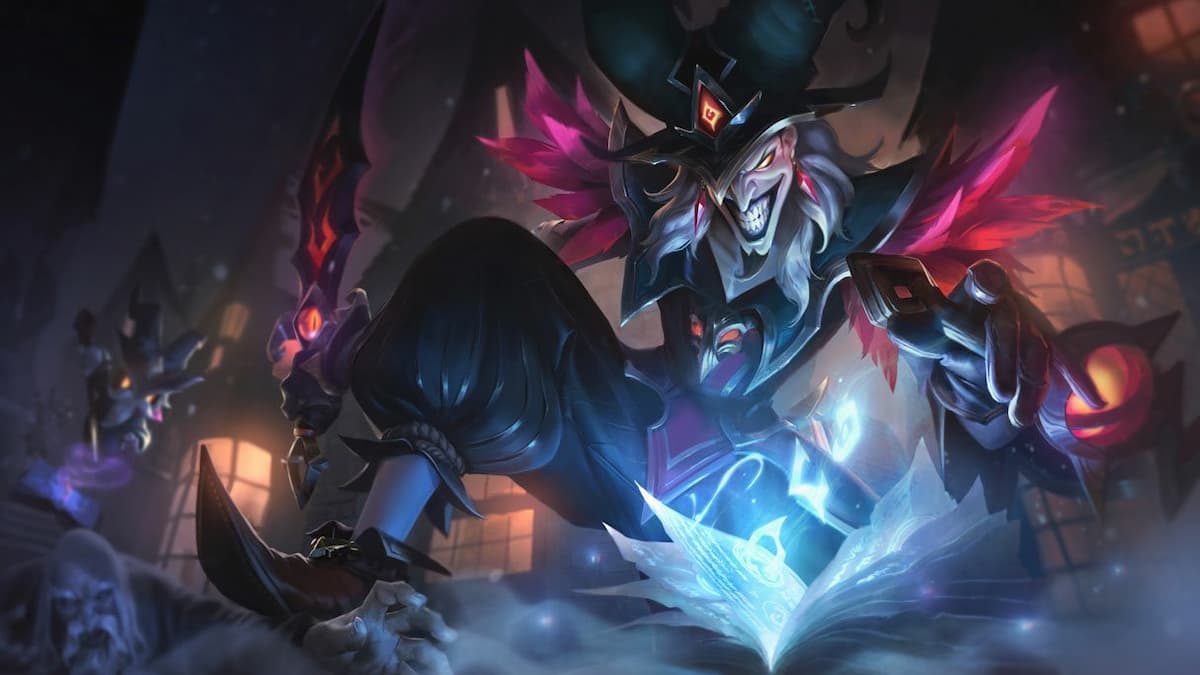Over the years, Riot Games has continually added cooldown reduction (CDR) and mana to most new or reworked items in League of Legends, removing important decision-making for players in terms of thinking about what to build.
Most roles easily reached 40 percent CDR by the mid game, removing weaknesses built into their kit due to their high cooldowns. Spamming abilities was also a huge issue with champions in the mid lane not having to think about mana use at all due to new runes and items.
But in the 2021 preseason, Riot made a lot of changes to both cooldown reduction and mana accessibility to make League feel like it’s going back to its roots where mana use mattered and every champ wasn’t overloaded with a cap of 40 percent CDR. The rework of cooldown reduction into ability haste to make it scale linearly instead of exponentially has helped tone down a lot of champions while removing mana from most items has turned out to be a great start in terms of making resources matter. These have been some of the best changes made to League in the game’s history.
But when did all of this start? When did champions begin to have too much CDR and no mana issues after spamming their abilities? Here are some of the biggest changes Riot has made to both mana accessibility and cooldown reduction over the years.
Season three: The jungle items and cooldown reduction crisis
The third season of League introduced new jungle items to make junglers more viable and not focused on gold-per-five-second builds. And alongside these jungle-oriented tools, a lot of items were added for other roles with cooldown reduction, making it easier to stack more CDR.
Some champions that were balanced due to having long cooldowns became overpowered and overtook the meta by force with the newly added items. This trend continued over the years when new CDR items were added to the game. Champions could easily reach 40 CDR by level 10, making them a nuisance to deal with.
Season five: Corrupting Potion
In the early days of League, sustain wasn’t a huge issue. But in season five, a huge change happened once an item called Corrupting Potion was introduced. Costing 500 gold, the item had three charges and restored 150 health and 50 mana over 12 seconds per charge. It helped bring a lot of champions that had a rough laning phase back into the meta by giving them the chance to stay in lane longer to reach their expensive power spikes.
Although Corrupting Potion was initially only taken by mid laners, it transitioned to being a staple item for top laners and some ADCs as well, solving a lot of sustain issues—especially for champions that had high mana costs. This item became a huge problem over the years, allowing strong champions with a weak early game to bypass their lackluster laning phase with ease due to the sustain it granted.
It nullified most attempts at poking enemies down and forcing them to back with little to no gold. This created a problem in the sense that better players could no longer press their advantage against weaker players who acquired this item.
Season six: Lost Chapter
Season six introduced many mid laners’ favorite item: Lost Chapter. The 900 gold item at the time restored 20 percent maximum mana after leveling up while providing a great build path, making it easy to acquire in the early game. Once purchased, most mid laners no longer had any mana issues going forward.
It was initially only built into Morellonomicon and some champions avoided it even though it was so strong. Not everyone needed the healing reduction from Morellonomicon since healing wasn’t as prevalent back in the day. But over time, players realized they could build Lost Chapter and hold onto it while they completed other items. The 900 gold delay didn’t impact most core builds by much and gave players the opportunity to ignore mana issues until they completed their essential items.
Season seven: Runes Reforged

Season seven ushered in new runes with impactful effects and completely different ways of customizing your champion with one primary keystone as the core of your rune build. Some of these new additions helped solve mana issues, providing plenty of options to a lot of CDR via various trees.
The idea behind Runes Reforged was to provide impactful effects—and it did. Instead of having to choose useless runes to increase your power by marginal values, you actually had strong runes to choose from now. This system granted players one core list that gave them access to a primary keystone, three minor runes from that list, and then two runes from a secondary one. You could no longer pick runes from more than two rune pages like before.
Over time, players learned that certain champions didn’t even need to build mana items if they took runes like Taste of Blood or Biscuit Delivery to solve their sustain issues. This made it more difficult for good players to punish bad players due to all the ways they could sustain via the new runes.
Season eight: Lost Chapter and rune adjustments
Lost Chapter was adjusted in season eight to be able to build into Luden’s Echo, Archangel’s Staff, and Hextech GLP-800. While the item was strong when introduced, it wasn’t built on every single champion since you didn’t always need the Morellonomicon effect from the upgraded item.
Once the item was reworked with more upgrades, though, all mid laners started rushing it since AP mid laners needed one of the above items. Burst mages acquired Luden’s Echo, scaling mages went for Archangel’s Staff, and battle or utility mages took Hextech GLP-800.
Time Warp Tonic was introduced during season eight as well, making Corrupting Potion a much stronger starting item due to the amount of sustain it provides. The rune allowed you to get additional health, mana, and a movement speed bonus while under the potion’s effect. It became a popular rune for most mid lane champions who wanted to be unstoppable early on.
Seasons nine and 10: Overflowing cooldown reduction
While some of the sustain issues that champions had were solved with the Runes Reforged changes, the last two seasons were famous for either introducing or reworking items to have CDR. Champions across all roles started easily hitting the cap of 40 percent cooldown reduction by just going for their core items without having to think about what to build.
Players were going for the Transcendence rune in the mid and support roles to get a lot of ability power due to the excess CDR from their items. Most mid lane and support items had CDR, so it was just a matter of time until you hit 40 percent when you got your core items.
Jungle champions also encountered this situation with core items having too much CDR, completely buffing some champs that relied on long cooldowns to new heights. This put a handicap on Riot’s design of new champions since it had to create them with long cooldowns due to how easy it was to access CDR.
2021 preseason: A step back for a better environment
During the current preseason, Riot reworked CDR into ability haste. Instead of reducing cooldowns by a flat amount, the new stat affects how many times a player can cast a spell, while also being uncapped at 40 percent like CDR. This was done to make the stat feel the same at any point in the game and scale linearly. One percent ability haste is always equal to one percent more abilities cast, unlike CDR, which scaled exponentially and felt stronger the more you had.
Riot also provided a huge item rework on a scale that’s never happened before in League. The new itemization forces players to actually think about what to build while providing various effects. Champions now regularly run out of mana and no longer reach a lot of ability haste by building their core items. Instead, they have to sacrifice certain effects from new items to go for ability haste or mana.
Runes like Presence of Mind also took a huge hit. Presence of Mind previously solved a lot of mana issues by restoring mana on takedowns and increasing the base mana of a champion. The rune no longer increases base mana, though. Instead, it increases mana regeneration, making it a decent laning rune but no longer overpowered to the point that it scales well into all stages of the game. While Riot did remove mana from a lot of items, it raised mana pools to compensate for a lot of champions affected by the item rework.
After removing ability haste from a large number of items, Riot can look to individually adjust champions affected by this ability haste drought to bring them in line with others who didn’t rely on the stat. The 2021 preseason is a great step toward making League a better game by forcing players to make decisions instead of building the same items in every match.
Make sure to follow us on YouTube for more esports news and analysis.







Published: Dec 15, 2020 05:55 pm